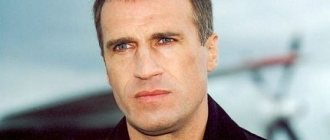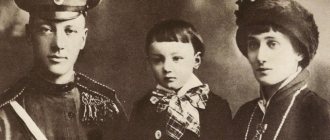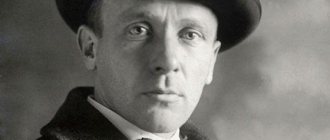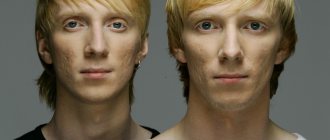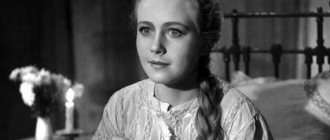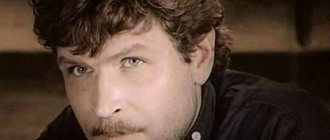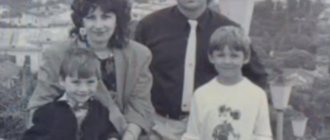Childhood
His father is a native of the Spanish province of Galicia - Angel Castro Argis. Being a poor landowner, Angel Castro emigrated from Spain. And already in Cuba he became rich and acquired a large sugar plantation. Here he met the future mother of his children. Lina Rus Gonzalez worked as a cook at the estate of Angel Castro. The couple got married after they had five children.
The parents were not literate people, but they tried to give their children an excellent education. Training was easy for Fidel, as he differed from his peers in his phenomenal memory. Already at the age of 13, the boy showed his rebellious character. Teaming up with the workers of his parents' plantation, he participated in a workers' rally.
short biography
Name: Fidel Alejandro Castro Ruz
Years of life: August 13, 1926 - November 25, 2016
State: Cuba
Field of activity: Politics
Greatest achievement: Leader of the socialist revolution in Cuba, after which he became head of state
Fidel Castro is considered one of the most prominent political figures in Cuba and the whole world. Castro organized the Cuban Revolution, after which he headed the government of Cuba until 2008.
Education
As the biography testifies, Fidel Castro Ruz has studied at a prestigious college called “Belen” since 1941. His mentor, Father Lorento, saw great potential in the boy, although he was not distinguished by diligent behavior. Fidel fought often. He had a pistol with which the boy went everywhere. Once, on a dare, Castro crashed into a wall while accelerating on his bicycle. He remained in the hospital for a long time, but the argument was won.
Interesting fact: at the age of 13, Fidel writes a letter to American President Franklin Roosevelt. The boy congratulates the head of state on his re-election to a third term and asks the president to send him a ten-dollar bill. Castro explains the request by saying that he has never seen such a banknote and would love to look at it. After some time, a response came from an employee of the presidential administration. This letter was even hung on the school board. However, the boy’s request was not granted, and he never received the bill.
In 1945, Fidel Castro, whose brief biography is described in the article, successfully graduated from college and became a student at the Faculty of Law at the University of Havana. During his student years he read a lot. He was fond of the works of Lenin and Stalin, Trotsky, Mussolini, Primo de Rivera. In 1950, Fidel graduated from the university with excellent results, receiving a law degree. After a short private practice as a lawyer, Castro entered politics.
The beginning of the revolutionary movement
The biography of the patriot Fidel Castro is very difficult. As a student, he became involved in the Cuban People's Party. And already in 1952 they intended to nominate his candidacy to parliament, but approval never took place. Within the party, Castro took part in various revolutionary movements.
One of these movements is the attempt to overthrow the dictatorial power of Fulgencio Batista. Castro and his party supporters, and there were 165 of them, spent a whole year preparing for the assault on the two largest barracks: in Santiago de Cuba and in the city of Bayamo. The action failed. As a result, many people died. Almost all of the survivors were arrested. Castro managed to escape, but a day later he was also arrested. Castro was sentenced to 15 years in prison. After 22 months in prison, on May 15, 1955, Fidel was released under an amnesty along with the rest of the conspirators. Immediately after his release, he emigrated to Mexico.
What is the deceased Cuban revolutionary Fidel Castro famous for?
On the evening of November 25, the world-famous leader of the Cuban revolution, Comandante Fidel Castro, passed away. NUR.KZ invites you to remember what people remember him for most.
Fidel Alejandro Castro Ruz was born on August 13, 1926 in Cuba in the town of Biran, Cuban province of Oriente, in the family of landowner Angel Castro, who was engaged in growing sugar cane.
According to classmates and teachers of the political leader, Castro was distinguished from his youth by his ambition, vanity and determination.
For example, one day he bet with a friend that he would crash into a wall on a bicycle at full speed. He won the argument, but had to be hospitalized.
The future Cuban leader graduated from a Jesuit college and then received a law degree in the Cuban capital, Havana, after which he began practicing law. He handled the affairs of the poor for free.
In 1952, Castro tried to become a deputy, but the party leadership refused to approve him as a candidate due to excessive radicalism.
That same year, he spoke out against Fulgencio Batista, who seized power over Cuba in a coup, and demanded that he be put on trial for violating constitutional norms.
In 1953, Fidel and his allies, numbering 165 people, took part in an attack on one of Batista’s garrisons. However, most of the rebels died, and the rest were sent to prison. Fidel Castro was sentenced to 15 years.
Under public pressure, he was released two years later, along with other conspirators, after which he left for Mexico.
Imprisonment did not force Castro to abandon his political views, and in 1958 he returned to his homeland along with his friend Ernest Che Guevara and other allies. His return was an important historical event that subsequently influenced the history of Cuba.
The guerrilla movement initiated by Castro and Che Guevara gained strength, and already in 1959 the rebels captured Havana. Batista was overthrown, another leader was elected in Cuba, and Fidel Castro became the commander-in-chief of the Cuban troops and head of the country's government.
“He possesses the qualities of a great leader, which, combined with his courage, with his energy and with his rare ability to recognize the will of the people again and again, have raised him to the place of honor that he now occupies.”
, Ernesto Che Guevara said about Fidel Castro.
Speaking about the perfect revolution, Castro said that it was socialist in nature.
Fidel Castro's relations with the United States were not the warmest.
“They cannot forgive us for the fact that we are under their noses, and that we carried out a socialist revolution under the nose of the United States!”
, he said.
In 1965, Castro became the first secretary of the Cuban Central Committee.
During the years of his rule, free medicine appeared in Cuba, the level of literacy of the population increased, and tourism flourished. The USSR provided great assistance to the country at that time.
On July 26, 2006, Castro was hospitalized in critical condition with bleeding in the intestinal area. He transferred the powers of the head of state, commander-in-chief of the Cuban Armed Forces and head of the Communist Party of Cuba to his younger brother Raul.
Fidel Castro's life was attempted or planned to be attempted 638 times. Behind these attempts were both the American government and mafia groups or political opponents of the Cuban leader.
To try to kill him, they used poisoned cigarettes, scuba tanks with tuberculosis bacillus in cylinders, bombs in baseballs, syringe pens and much more. All of them were unsuccessful.
“If surviving assassination attempts was an Olympic discipline, I would have a gold medal in it.”
, - the commander himself once said.
Popular rumor ascribes many affairs to Fidel Castro - it is said that he had incredible charisma that made women lose their heads in his presence. However, the official biography mentions his three main women.
The Comandante's first wife was the lovely blonde Mirta Diaz Ballart, the daughter of a minister in Batista's government. They had a son, Fidelito, Castro's only legitimate child.
But during the preparation for the revolution, relations between the spouses cooled, and soon Nati Revuelta, the wife of a Havana doctor and an active supporter of the revolution, who became Castro’s mistress, appeared in Fidel’s life.
To support Castro, Revuelta withdrew all the money from her account and sold all her diamonds, giving the money to the revolution. When the rebel went to prison, Nati corresponded with him.
They were never married, but their romance was very stormy and led to the birth of their daughter Alina.
Later, Alina, who had already grown up and fled from Cuba, wrote a book in which she said that the Cuban commandant had six children. All their names begin with the letter “a” - Alex, Alexander, Alejandro, Antonio, Angelito.
The Comandante's last wife was his secretary Celia Sanchos, who assisted him in all matters. But in 1985 she committed suicide.
On November 25, Fidel Castro died of intestinal disease.
Emigration
But in Mexico, Fidel’s revolutionary spirit did not fade. Here, with his associates, he again began to draw up a plan to overthrow the dictator, founding the July 26 Movement. In his letter, published in one of the most popular Cuban magazines, Castro convincingly states that the government will be overthrown before the end of 1956. Either this will happen, or the revolutionaries will fall in battle. It is noteworthy that Ernesto Guevara, an Argentine doctor, was present on the motor yacht on which the rebels went to Cuba.
The landing was unsuccessful. A short time later, government troops attacked the revolutionaries. Many were killed. A small number of survivors managed to escape into the forests. There, united, they continued to attack police stations for some time. A sharp turn in the confrontation was the announcement of land reform. The peasants did not like this innovation, and they began to join the revolutionaries. Trying to suppress the rebellion, Batista sent a detachment of soldiers into the mountains where the rebels were hiding. But they never came back. Some fled, and some joined the rebels. Now the advantage was on the side of the revolutionaries.
For two years the rebels waged a guerrilla struggle. Castro himself took direct part in all battles. He became the commander-in-chief of the partisan detachments, which he renamed the Rebel Army. The revolutionary movement was growing and victory was near.
Interesting fact: in clashes between partisans and government troops, Castro was always in the first line. From his rifle, which he always kept with him, the commander-in-chief gave his army a sign to begin the offensive. And so it would have continued, but the rebels wrote a letter to Fidel demanding not to engage in direct combat and to stay away from the war zone.
Assassinations and health
It seems incredible, but according to the official version, 638 attempts were planned and carried out on Fidel Castro’s life. Their organizers were both American and Cuban groups.
They tried to poison Fidel, blow him up, shoot him, or set up some kind of accident. Castro himself looked at everything that was happening with irony. In an interview, he said that if staying alive after assassination attempts was an Olympic discipline, he would have won a gold medal.
When Fidel's health suddenly deteriorated in 2006, any information about his health remained classified. However, rumors began to appear in the press about several illnesses of the commander.
It is known that since 1998, Castro developed Parkinson's disease. If you believe the words of a Cuban doctor who escaped from the island, the politician had colon cancer. In addition, in the late 80s, after a cerebral hemorrhage, Fidel underwent surgery.
Information has repeatedly appeared in the press that he died. In such cases, Castro immediately made public statements proving the opposite.
In 2014, Fidel Castro had a conversation with the head of the Russian Foreign Ministry, Sergei Lavrov. The latter said that although the Comandante is physically weak, he still has a revolutionary spirit.
First years of reign
Castro's management strategy is considered controversial. After coming to power, the new president abolishes free elections and also abolishes the current Constitution. At first, Cuba received enormous support from the American government. But such relations did not last long - having begun to establish close relations with the Soviet Union, Cuba lost such patronage.
Land reform played a role, according to which the property of large and medium-sized landowners was divided in favor of the poor population. Banks, telephone and electricity companies, as well as various large enterprises, including sugar factories, were also nationalized. Since they were mostly owned by American entrepreneurs, it goes without saying that this decision affected relations between the two countries. America, in response to such actions, stopped supplying oil to Cuba and stopped buying Cuban sugar. People began to leave the country en masse. Fidel appointed his younger brother Raul Castro as the country's Minister of Armed Forces.
Cuban Revolution
Looking ahead, we note that Fidel never abandoned his revolutionary sentiments. In 1958, Castro returns from South America with his future ally Ernest Che Guevara and a group of armed rebels. This episode played a huge role not only in the life and fate of the future politician, but also in the fate of the entire Cuban people.
Fidel Castro and Che Guevara
The guerrilla movement initiated by Castro and Che Guevara would soon gain strength, and already in 1959 rebel troops would capture Havana. Some time later, the Batista regime will be overthrown, and one dictator will be replaced by another. Fidel Castro became the commander-in-chief of the Cuban forces, as well as the head of the country's government. In the first years after the revolution, the United States of America provided active assistance to the new head. But soon relations between the states went wrong. Cuba has set a course towards building socialism. On this basis, all large and medium-sized landowners lost their lands, the property of private companies was nationalized, and Cubans began to leave the country en masse.
However, this was just the beginning. In 1962, based on a preliminary agreement with Moscow, Cuba deployed Soviet ballistic missiles on its territory. In response, the United States is putting its own army on high alert. The whole world is frozen on the brink of nuclear war. The collision is avoided, but after this moment Cuba was never the same. In 1965, Fidel Castro declared himself the first secretary of the Central Committee of Cuba.
Fidel Castro - legendary politician
The Rise of Uber Matos
Not everyone agreed with the chosen vector of the country's development. Uber Matos, the commander of the troops in Camagüey, accused Castro of trying to build a communist country and was against it. He wrote a letter to the president announcing his resignation. He also received support from more than a dozen supporters. Castro regarded such a step as betrayal and conspiracy. Arriving in person in Camagüey, he arrested Matos. The court sentenced the defendant to 20 years in prison. Uber Matos served his entire sentence.
Repression
The repressions carried out during the reign of Fidel Castro were on a terrifying scale. The execution victims and prisoners numbered in the thousands. Moreover, the sentence was often passed without trial or investigation. And the executions were demonstrative and often massive. Any manifestation of discontent among the people was suppressed by force. The commandant of La Cabaña prison was Che Guevara himself. He also ordered the executions.
Caribbean crisis
Castro's rule also saw the severe Cuban Missile Crisis. The main opponents of this crisis were the USSR and America. The Cold War was gaining momentum. The aggravation became stronger every day. America had an undeniable advantage in the field of military technology. By installing 15 missiles in Turkey, they forced the Soviet Union to take retaliatory measures - to place their missiles in Cuba. At that time, the USSR very strongly supported the Cuban economy, so it was not necessary to wait long for permission to deploy its missiles on the country’s territory. The crisis was avoided without casualties. But never before has the world been so close to nuclear war.
Chairman of the State Council of Cuba
For almost 20 years as head of the government of Cuba, Fidel Castro completely transformed the state - the country in a very short time came to prosperity and experienced an unprecedented economic recovery. The new head of Cuba took special care of the social sphere, making medicine free for the population and increasing the level of education to 98%. At the same time, the nationalization of private companies from the USSR was carried out.
In 1962, Soviet nuclear missiles were stationed on the island, worsening relations between the United States and Cuba. Hostility with the West provoked the Cuban missile crisis on the island, due to which many of Castro's associates fled the country and took the side of the Americans.
Despite this, the Cuban leader continued to act towards the overthrow of world capitalism, supporting foreign revolutionary movements in Angola, Afghanistan, South Yemen, Ethiopia, Syria, Algeria, Nicaragua, Libya and other third world countries.
Economic growth and stability in Cuba stopped in the early 1980s when the USSR stopped providing financial support to the country. This led to an economic crisis that made Cuba the poorest country in the world. Against this background, people began to try by any means to leave their homeland and move to the United States, and in Cuba, oppositionists began to organize a movement to overthrow the Castro regime.
In 2006, for health reasons, the Cuban leader was forced to transfer powers to his brother Raul, who in 2008 became the rightful ruler of Cuba, since Fidel Castro was physically no longer able to govern the country and lead the Cuban army.
Assassination attempts
During the years of his reign, Castro was assassinated several hundred times. But none of these attempts came to fruition, and as a result, the Cuban leader died at the age of 90 from natural causes. The leader in the number of attempts on Castro's life is America. Although at UN meetings US representatives denied their involvement in such actions, the Church Commission presented evidence in favor of the opposite. During the first years of his reign alone, CIA agents organized an attempt to eliminate the Cuban leader 8 times. The US presidential administration was also actively involved in the struggle to overthrow Castro. This does not include contract killings and revolutionary uprisings. According to preliminary estimates by the former head of the country's counterintelligence service, one of Castro's guards, America made about 600 attempts to overthrow the national leader of Cuba.
Similarly, attempts were made to assassinate Castro by the mafia. There are at least two known cases in which representatives of the Cuban mafia, bribed by CIA agents, tried to kill the president by adding poison to his food. The attempts were also unsuccessful.
Personal life
Now we know the political biography of Fidel Castro. What can you say about his personal life? Castro is credited with many love affairs. His first wife, Mirta Diaz Ballart, gave birth to Fidel's son Fidelito. The couple separated due to the husband's passion for politics. The result of love attraction for the married Naty Revuelta was the daughter Alina. The father recognized the child only 20 years later. But after his daughter fled to America, Castro forbade mentioning her anywhere. According to his daughter, Castro has at least five children with his common-law wife, Deliv Soto. His last wife was his secretary, who shared his political views and hobbies. However, in 1985, the girl committed suicide.

